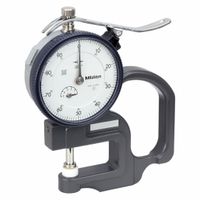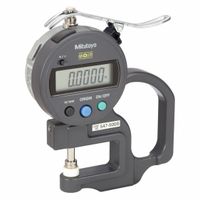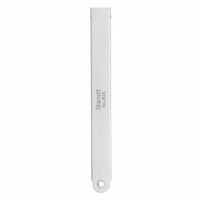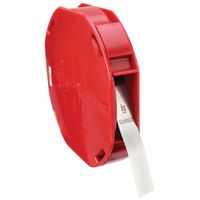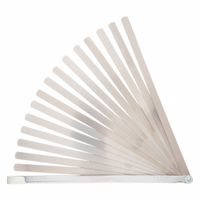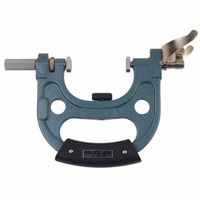Call +(254) 703 030 000 / 751 483 999 / 721 704 777
- Home
- Machining
- Precision Measuring Tools
- Thickness Gauges Feeler Gauges Snap Gauges
.....Read More
Frequently Asked Questions
What is a thickness gauge used for?
A thickness gauge is a precision instrument used to measure the thickness of various materials and objects. It is essential in industries where accurate measurements are crucial for quality control, safety, and compliance with standards. Thickness gauges come in different types, each suited for specific applications and materials.
1. **Coating Thickness Gauge**: This type is used to measure the thickness of coatings, such as paint, plating, or anodizing, on metal surfaces. It ensures that coatings meet specified thickness requirements for protection and aesthetics.
2. **Ultrasonic Thickness Gauge**: This device uses ultrasonic waves to measure the thickness of materials like metals, plastics, and composites. It is particularly useful for measuring the thickness of objects that are only accessible from one side, such as pipes and tanks.
3. **Mechanical Thickness Gauge**: Often used in manufacturing, this gauge measures the thickness of sheet materials like paper, plastic films, and metal sheets. It typically uses a dial or digital readout to display measurements.
4. **Magnetic Thickness Gauge**: Used primarily for non-destructive testing of non-magnetic coatings on ferrous substrates, this gauge measures the magnetic field's change as it passes through the coating.
5. **Digital Thickness Gauge**: This versatile tool provides digital readouts for precise measurements and is used across various industries, including automotive, aerospace, and construction.
Thickness gauges are vital for ensuring product quality, verifying material specifications, and maintaining safety standards. They help detect wear, corrosion, and defects, preventing potential failures and ensuring longevity and reliability in products and structures.
How do you use a dial thickness gauge?
To use a dial thickness gauge, follow these steps:
1. **Preparation**: Ensure the gauge is clean and free from dust or debris. Check that the dial indicator is set to zero. If necessary, calibrate the gauge using a standard reference piece of known thickness.
2. **Positioning**: Hold the gauge in one hand, ensuring a firm grip. The gauge typically has a flat base or anvil and a movable spindle connected to the dial indicator.
3. **Sample Placement**: Place the material or object to be measured between the anvil and the spindle. Ensure the sample is flat and properly aligned to avoid skewed readings.
4. **Measurement**: Gently release the spindle by pressing the lever or button, allowing it to come into contact with the sample. The spindle should rest lightly on the material without applying excessive force, which could compress the sample and affect accuracy.
5. **Reading the Dial**: Observe the dial indicator, which will display the thickness measurement. The large hand indicates the primary measurement, while the smaller hand or additional scale may show finer increments for more precise readings.
6. **Recording**: Note the measurement displayed on the dial. If multiple measurements are needed, repeat the process at different points on the sample to ensure consistency and accuracy.
7. **Post-Measurement**: Once measurements are complete, remove the sample and ensure the spindle returns to its original position. Clean the gauge if necessary and store it in a protective case to prevent damage.
8. **Verification**: Periodically verify the gauge's accuracy by measuring a standard reference piece, especially if the gauge is used frequently or in varying environmental conditions.
What is the difference between a dial and digital thickness gauge?
A dial thickness gauge and a digital thickness gauge are both tools used to measure the thickness of materials, but they differ in their design, operation, and features.
1. **Display**:
- **Dial Thickness Gauge**: Uses a mechanical dial to display measurements. The dial has a needle that moves over a graduated scale, providing a visual representation of the thickness.
- **Digital Thickness Gauge**: Features an electronic digital display that shows measurements in numeric form, often with higher precision and the ability to switch between units (e.g., millimeters and inches).
2. **Accuracy and Precision**:
- **Dial Thickness Gauge**: Generally offers good accuracy but is limited by the resolution of the dial scale. It may be more challenging to read very small increments.
- **Digital Thickness Gauge**: Typically provides higher precision and can display measurements to more decimal places, making it suitable for applications requiring high accuracy.
3. **Ease of Use**:
- **Dial Thickness Gauge**: Requires manual reading of the dial, which can be subject to human error, especially in low-light conditions or for users with poor eyesight.
- **Digital Thickness Gauge**: Easier to read with a clear digital display, often featuring backlighting for use in various lighting conditions.
4. **Features**:
- **Dial Thickness Gauge**: Generally more straightforward with fewer features, relying on mechanical components.
- **Digital Thickness Gauge**: May include additional features such as data storage, zero-setting, and connectivity options for data transfer to computers or other devices.
5. **Power Source**:
- **Dial Thickness Gauge**: Does not require a power source, as it operates mechanically.
- **Digital Thickness Gauge**: Requires batteries or another power source to operate the digital display and electronic components.
6. **Durability**:
- **Dial Thickness Gauge**: Often more robust and less susceptible to damage from environmental factors like moisture or dust.
- **Digital Thickness Gauge**: Can be more sensitive to environmental conditions and may require more careful handling.
How do you calibrate a thickness gauge?
To calibrate a thickness gauge, follow these steps:
1. **Preparation**: Ensure the gauge is clean and free from any debris. Check the manufacturer's manual for specific calibration instructions and required tools.
2. **Select Calibration Standards**: Use certified calibration standards or shims with known thicknesses. These should cover the range of measurements you intend to take.
3. **Zero Calibration**: Turn on the gauge and set it to zero. For mechanical gauges, adjust the dial to zero. For digital gauges, follow the on-screen instructions to zero the device.
4. **Calibration Process**:
- Place the gauge on the first calibration standard.
- For mechanical gauges, adjust the dial to match the known thickness of the standard.
- For digital gauges, if the reading does not match the standard, use the calibration function to adjust the reading.
5. **Repeat for Multiple Standards**: Use multiple standards to ensure accuracy across the gauge's range. Record the readings and adjust as necessary.
6. **Verification**: After calibration, verify the gauge's accuracy by measuring the standards again. The readings should match the known thicknesses within the specified tolerance.
7. **Documentation**: Record the calibration results, including the date, standards used, and any adjustments made. This documentation is essential for quality control and future reference.
8. **Regular Calibration**: Establish a regular calibration schedule based on usage frequency and manufacturer recommendations to maintain accuracy.
9. **Environmental Considerations**: Perform calibration in a controlled environment to minimize temperature and humidity effects on measurements.
10. **Final Check**: After calibration, perform a final check on a test piece to ensure the gauge provides accurate readings in practical applications.
What materials can be measured with a thickness gauge?
A thickness gauge is a versatile tool used to measure the thickness of various materials. It can be applied to:
1. **Metals**: Steel, aluminum, copper, and other metal sheets or plates are commonly measured using thickness gauges, especially in manufacturing and quality control processes.
2. **Plastics**: Thickness gauges are used to measure plastic films, sheets, and components, ensuring they meet specified dimensions for packaging, automotive, and consumer goods industries.
3. **Glass**: In industries like construction and automotive, thickness gauges help ensure glass panels and windshields meet safety and design specifications.
4. **Coatings**: Non-destructive thickness gauges measure paint, varnish, and other coatings on metal and non-metal substrates, crucial for automotive, aerospace, and industrial applications.
5. **Rubber**: Rubber sheets and components, such as gaskets and seals, are measured to ensure they meet design and functional requirements.
6. **Paper and Cardboard**: In the printing and packaging industries, thickness gauges ensure paper and cardboard products meet required standards for quality and performance.
7. **Wood**: Wood panels and veneers are measured to ensure consistency and quality in furniture and construction applications.
8. **Ceramics**: Thickness gauges are used in the production of ceramic tiles and components to ensure uniformity and adherence to specifications.
9. **Textiles**: Fabrics and non-woven materials are measured for thickness to ensure quality and performance in clothing and industrial applications.
10. **Composites**: In aerospace and automotive industries, composite materials are measured to ensure structural integrity and performance.
Thickness gauges can be mechanical, digital, or ultrasonic, each suited for specific materials and applications, providing accurate and reliable measurements across diverse industries.
How accurate are thickness gauges?
The accuracy of thickness gauges depends on several factors, including the type of gauge, the material being measured, and the conditions under which the measurement is taken. Generally, thickness gauges can be highly accurate, with some capable of measuring to within micrometers or even nanometers.
Ultrasonic thickness gauges, for example, are commonly used for non-destructive testing and can achieve accuracies of ±0.01 mm or better, depending on the device and the material. These gauges work by sending ultrasonic waves through the material and measuring the time it takes for the waves to reflect back. The accuracy can be affected by factors such as surface roughness, temperature, and the presence of coatings or corrosion.
Magnetic and eddy current thickness gauges are often used for measuring coatings on ferrous and non-ferrous metals, respectively. These can achieve accuracies in the range of ±1-3% of the reading, but this can vary based on the thickness of the coating and the substrate material.
Mechanical thickness gauges, like micrometers and calipers, can provide very high accuracy, often within ±0.01 mm, but require direct contact with the material and are more suitable for rigid, accessible surfaces.
Environmental conditions, such as temperature and humidity, can also impact the accuracy of thickness gauges. Calibration against known standards is essential to maintain accuracy, and regular calibration is recommended to ensure consistent performance.
In summary, while thickness gauges can be highly accurate, the specific accuracy depends on the type of gauge, the material, and the measurement conditions. Proper calibration and consideration of environmental factors are crucial for achieving the best results.
What is the purpose of a feeler gauge?
A feeler gauge is a precision tool used to measure gap widths or clearances between two parts. It consists of a set of thin metal blades or strips, each with a specific thickness, which are used to determine the size of a gap. The primary purpose of a feeler gauge is to ensure that components are properly aligned and spaced, which is crucial for the optimal functioning of mechanical systems.
In automotive and mechanical engineering, feeler gauges are commonly used to measure the clearance between engine parts, such as the gap between a spark plug electrode and the cylinder head, or the valve clearance in an engine. Proper clearance ensures efficient engine performance, prevents wear and tear, and avoids potential mechanical failures.
Feeler gauges are also used in various other applications, such as setting the gap in electrical contacts, checking the clearance in bearing assemblies, and ensuring the correct spacing in manufacturing processes. They are essential in quality control and maintenance tasks, where precise measurements are critical.
The blades of a feeler gauge are typically made of high-quality steel to resist wear and maintain accuracy. They are often marked with their thickness in both metric and imperial units for versatility. By selecting and inserting the appropriate blade or combination of blades into a gap, technicians can accurately measure and adjust the clearance to meet specified tolerances.
Overall, the feeler gauge is an indispensable tool for ensuring precision and reliability in mechanical systems, contributing to the longevity and efficiency of machinery and equipment.
